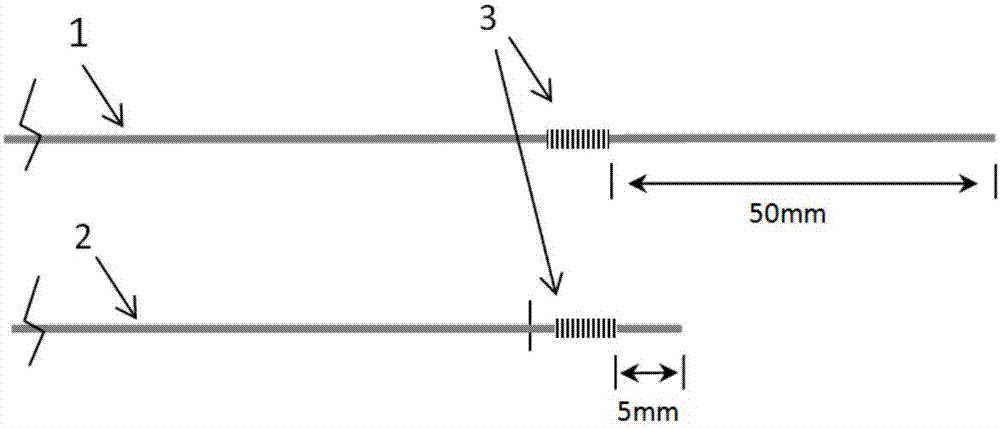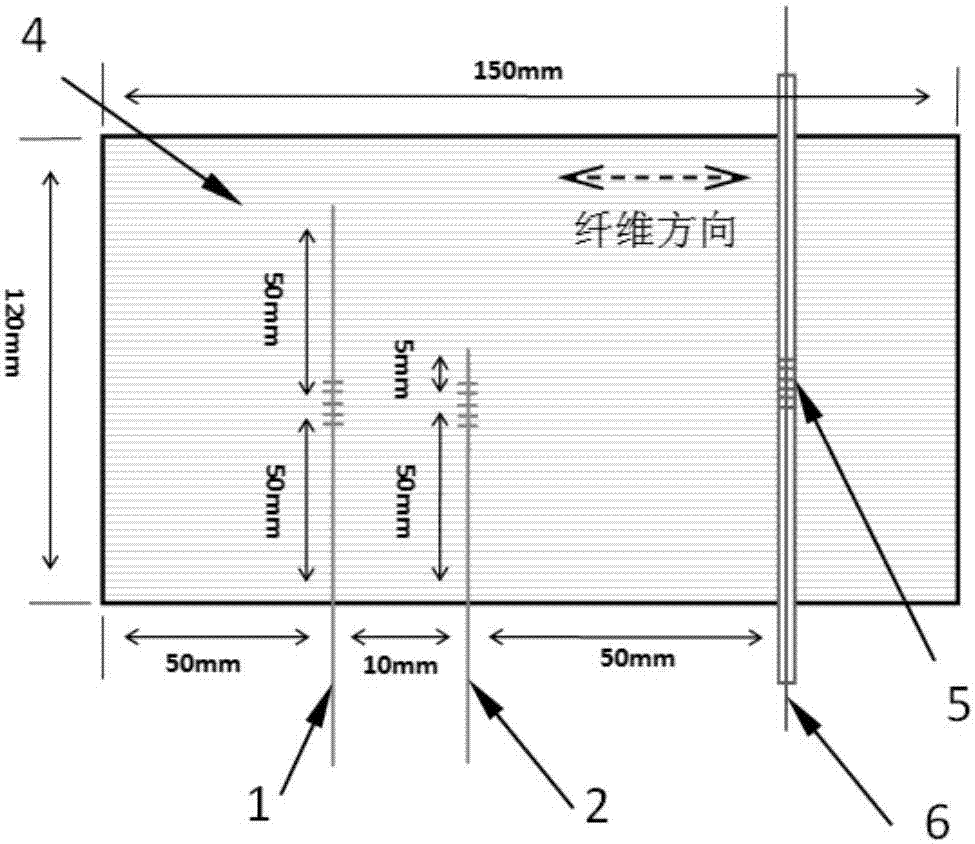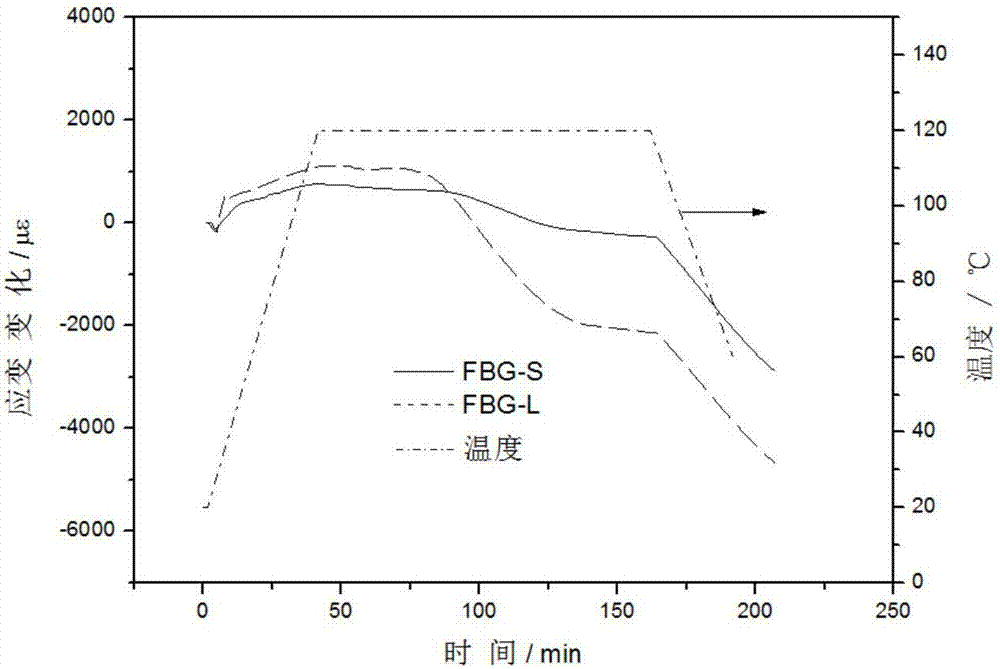Method of monitoring effective chemical shrinkage rate of thermoset composite in real time
A composite material and chemical shrinkage technology, applied in the direction of material thermal expansion coefficient, measuring device, optical device, etc., to optimize the curing process and reduce the effect of chemical shrinkage
- Summary
- Abstract
- Description
- Claims
- Application Information
AI Technical Summary
Problems solved by technology
Method used
Image
Examples
Embodiment 1
[0035] The method of the invention is used for monitoring the transverse effective chemical shrinkage rate of the carbon fiber / epoxy prepreg in the autoclave curing process.
[0036] In this example, tail-cut FBG groups with different lengths of pigtails were used to embed them in carbon fiber / epoxy unidirectional prepreg tape, and the gel point and transverse effective chemical shrinkage rate during the autoclave molding process were successfully monitored.
[0037] 1. Tail-cut FBG groups were prepared according to the following steps:
[0038] 1) if figure 1 As shown, select two FBG sensors whose length is 5mm and the center wavelength is 1550nm, and use wire strippers to strip the coating layer within 50mm on both sides of the sensing band.
[0039] 2) Select one of them and cut it at a distance of 5mm from one side of the sensing section to obtain the short-tailed FBG sensor 2, denoted as FBG-S.
[0040] 3) Select another one and cut it off at a distance of 50 mm from on...
Embodiment 2
[0055] The method of the invention is used for monitoring the transverse effective chemical shrinkage rate of the composite material during the vacuum introduction process.
[0056] In this example, tail-cut FBG groups with different lengths of pigtails were used to embed them in glass fiber / epoxy composite materials, and the gel point and transverse effective chemical shrinkage rate during the vacuum introduction process were successfully monitored.
[0057] 1. Tail-cut FBG groups were prepared according to the following steps:
[0058] 1) Select two FBG sensors with a length of 3mm and a center wavelength of 1545nm, and use wire strippers to peel off the coating layer within 50mm on both sides of the sensing band.
[0059] 2) Select one of them and cut it at a distance of 5mm from one side of the sensing section to obtain the short-tailed FBG sensor FBG-S.
[0060] 3) Select another one and cut it at a distance of 60 mm from one side of the sensing section to obtain the lon...
PUM
| Property | Measurement | Unit |
|---|---|---|
| length | aaaaa | aaaaa |
| wavelength | aaaaa | aaaaa |
| length | aaaaa | aaaaa |
Abstract
Description
Claims
Application Information
 Login to View More
Login to View More - R&D
- Intellectual Property
- Life Sciences
- Materials
- Tech Scout
- Unparalleled Data Quality
- Higher Quality Content
- 60% Fewer Hallucinations
Browse by: Latest US Patents, China's latest patents, Technical Efficacy Thesaurus, Application Domain, Technology Topic, Popular Technical Reports.
© 2025 PatSnap. All rights reserved.Legal|Privacy policy|Modern Slavery Act Transparency Statement|Sitemap|About US| Contact US: help@patsnap.com



